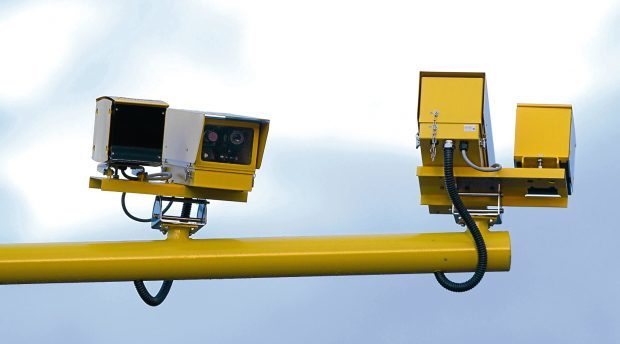Transport chiefs have ruled out installing average-speed cameras along the AWPR, despite claiming they are the best way to cut deaths on the neighbouring road.
Average speed devices have been rolled out along the A90 Aberdeen to Dundee road, from Stonehaven, and will go live in October.
Transport Minister Humza Yousaf claimed last week the cameras would result in fewer deaths on the busy route.
But now Transport Scotland has revealed it has “no plans” to introduce the same devices on the £745million Aberdeen Western Peripheral Route, which is scheduled to open this winter.
The decision has led to renewed pressure on Mr Yousaf to make public the reasoning behind the decision to instal the cameras on the A90.
Despite repeated attempts, transport bosses have refused to disclose to the Press and Journal the justification for putting the cameras in between Stonehaven and Dundee.
North-east MSP Lewis Macdonald said: “In a sense average-speed cameras are something that works in certain circumstances and not in others.
“I think people will thank the Scottish Government for recognising they are not always the best solution, but if they are not then they need to provide evidence as to why they are the way to go on the A90.
“What Humza Yousaf seemed to be saying last week was that they were always the best solution. I think we need clarification from the transport minister on why they are chosen in some situations.
“And the transport minister himself needs to understand the basis for these decisions and not just sign off on Transport Scotland’s choices, it’s for him to take those decisions too.”
Liam Kerr, Scottish Conservative North East MSP, was scathing about what he described as the SNP’s mixed messages.
He said: “Motorists will question this approach from the Scottish Government and ask why these cameras are necessary on the A90 from Dundee to Aberdeen but not beyond.
“At best, this is inconsistent and will do nothing to ease concerns among some drivers – rightly or wrongly – that the installation of these devices is just another revenue-raising exercise.
“It also begs the question whether this SNP government is simply putting off spending the money until the accident toll starts to rise.”
Neil Greig of IAM Road Smart, formerly the Institute of Advanced Motorists, also called for more transparency.
The organisation’s director of policy and research said: “They are correct to wait, average speed cameras do seem to be used as an ‘after-treatment’ once they work out what the problems are on the road.
“Every road is different, the bypass will be different to the A90, there will be more junctions and a range of speed limits, though they haven’t gone into detail on that yet.
“I haven’t seen any real detail on the A90 though, which is completely different to the A9.”
Transport Scotland has said there will be a yearly review of safety on the bypass as there is on all trunk roads in the country.
A spokesman said: “Road safety is of paramount importance to the Scottish Government. The purpose of safety cameras on our roads, including average-speed cameras on the A90, is to improve road safety. There are no plans for average speed cameras on the AWPR/B-T route.
“Transport Scotland assesses the safety performance of the trunk road network on an annual basis, including the A90. Further investigations are carried out and where appropriate, mitigation measures are prioritised and delivered.
“We use an evidence-based approach to enable us to prioritise resources across the country to support effectively the delivery of the Scottish Government’s 2020 casualty reduction targets.”










